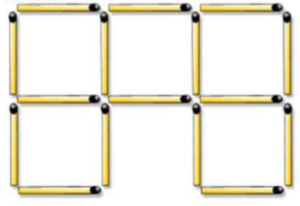Amid the chaos created due to the Coronavirus pandemic, all the major entrance tests were rescheduled. However, with the world finally getting accustomed to the ‘new normal,’ the education system is going back in place as well.
Due to this, many entrance exams have been conducted in the last week of August and the first week of September. Among them is the NATA 2020.
The National Aptitude Test in Architecture (NATA) Council of Architecture. Held annually, the purpose of this national-level examination is to enable individuals who score well in the exam to secure admission to undergraduate courses in architecture.
The NATA is conducted in two phases, and if students choose, they can attempt for the exam twice. If they do appear for both the tests, they will be provided with two separate scorecards. The best score among both the results will be considered for admission to BArch courses. Considering the importance of the exam, many students enrol for NATA classes in Pune to ensure they are well-prepared for the exam under the guidance of experts.
The NATA 2020 exam – second test – was conducted on 12th September 2020. The results of phase-1 have already been announced by the CoA on 4th September and the results for phase-2 will be announced by 17th September.
To check the NATA 2020 results, candidates need to log in to the official website of NATA and log in by providing their credentials.
In this blog, we have analysed various aspects of the NATA 2020 and how the exam was impacted by the Coronavirus pandemic.
NATA 2020: Section-wise Syllabus – Revised
The NATA exam is divided into two sections; Part A and Part B. Up until 2019, Part A consisted of Mathematics and General Aptitude, which was conducted online and Part B tested the candidates drawing skills and knowledge in a physical setting.
However, as of 2020, Part A section comprised of an online Drawing Test, which was followed by Part B, which was also conducted online and covered PCM and General Aptitude Questions. The revised syllabus was announced on the official website, wherein it was stated that the drawing test will aim to judge, the creativity and innovation of the candidate. To accommodate the Drawing Test for an online setting below is an example of the type of questions asked:
Question: By moving which of the three matchsticks can four squares be derived from the five squares? Select from the options given on the right-hand side.
Image:
- Bottom left corner two and middle row centre matchstick
- Middle row three matchsticks
- Top right corner two
- Three vertical matchsticks from the centre
To ace the revised syllabus of the NATA 2020, students had to prepare for the following:
- Have an in-depth understanding of the crucial visual principles in a composition (2D & 3D), which includes rhythm, balance, hierarchy, directions, and others.
- Skilled in Geometry and have the ability to visualize a shape to solve geometrical puzzles that test intelligence
- Master the colour theory and understand the various terminologies that test colour scheme awareness and knowledge.
- Be capable of visual system interpretation and have a keen perception that enables the candidate to identify graphical similarities and other properties
- Understand the spatial relationship between different objects and have the ability to visualize images and scenarios
NATA 2020: Marking Scheme
As of 2020, the NATA question paper carries 200 marks divided across 53 questions. When it comes to the PCM and General Aptitude Test, candidates will be awarded 1.5 marks for each correct answer. On the other hand, the Drawing Test will be checked by a panel of multiple examiners independently, and an average of the marks will be taken into considerations. Of the three questions in the Drawing Test, 2 will weigh 35 marks and the final question carries 55 marks. While there is no negative marking if the candidate gets an answer wrong, the number of incorrect answers will be taken into consideration in the case of a tie-breaker.
The Impact of The Coronavirus on NATA 2020
The NATA exam is conducted twice every year, however, owing to the Coronavirus pandemic, the CoA postponed the NATA 2020 exam date for both the sessions. The first session was conducted on September 4th, while the second was conducted on September 9th 2020.
As mentioned earlier, the revised exam pattern had 53 questions in total in the NATA 2020, down from the usual 62 questions. The number of questions was increased in the Drawing Section, while the number decreased in the Aptitude section.
Unlike most entrance exams, the NATA isn’t new to change. In fact, after the exam every year, a group of experts carefully analyse the responses of the candidates, along with the overall feedback the exam received on online portals. Based on this analysis, the exam is revised to ensure the questions remain relevant to the industry.
However, the change brought in the NATA 2020 exam was quite different, particularly cause it was unexpected. The candidates who were preparing for the exam for over a year had to completely change course during the last few months.
While our students at the IID were surely unsure and wearisome of the sudden change, their passion combined with the skills of our teachers enabled us to help them prepare well.
Another change in the NATA 2020 schedule that was unfortunate for the students was the entire exam was conducted online. Hence, those students who faced connectivity or technological issues while attempting the exam during the first session had to retake the test on the same day as the second session.
This setting was difficult for students who have attempted both the NATA 2020 sessions as they had to take the exam twice on the same day.
That being said, organizing the exam, despite all the challenges at such a large scale to ensure candidates aspiring to build a lucrative career in architecture get the opportunities they deserve is truly commendable.
With an aim to test candidates in the best manner, the CoA strives persistently to improve the NATA 2020, thereby ensuring the candidates who achieve the best results get great opportunities.
Hence, if you’re looking for a bright future in the architecture industry, you need to focus your efforts on getting remarkable scores in the NATA exam. IID offers NATA crash courses in Pune which are tailored to suit the students’ comfort and preference. By employing the best teaching methods, IID ensures that the crash courses offered covers every topic in the NATA syllabus in a considerable amount of time. Join us to achieve the best results!













